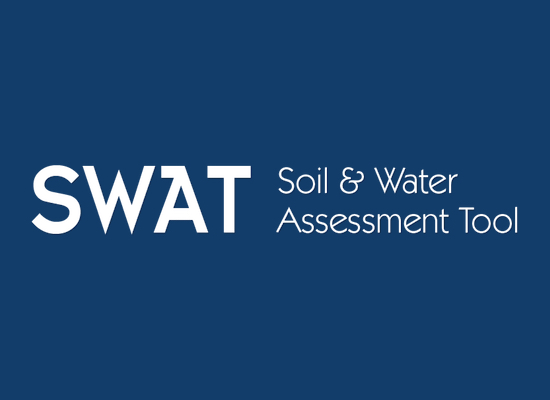Primary Functions
- Assess soil erosion prevention and control, non-point source pollution control, and regional management in watersheds.
Detailed Description
The Soil & Water Assessment Tool is a small watershed to river basin-scale model used to simulate the quality and quantity of surface and ground water and predict the environmental impact of land use, land management practices, and climate change. SWAT is widely used in assessing soil erosion prevention and control, non-point source pollution control and regional management in watersheds.
The development of SWAT is a continuation of USDA Agricultural Research Service (ARS) modeling experience that spans a period of roughly 30 years. Early origins of SWAT can be traced to previously developed USDA-ARS models including the Chemicals, Runoff, and Erosion from Agricultural Management Systems (CREAMS) model (Knisel, 1980), the Groundwater Loading Effects on Agricultural Management Systems (GLEAMS) model (Leonard et al., 1987), and the Environmental Impact Policy Climate (EPIC) model (Izaurralde et al., 2006), which was originally called the Erosion Productivity Impact Calculator (Williams, 1990). The current SWAT model is a direct descendant of the Simulator for Water Resources in Rural Basins (SWRRB) model (Arnold and Williams, 1987), which was designed to simulate management impacts on water and sediment movement for ungauged rural basins across the U.S.
SWAT is a basin-scale, continuous-time model that operates on a daily time step and is designed to predict the impact of management on water, sediment, and agricultural chemical yields in ungauged watersheds. The model is physically based, computationally efficient, and capable of continuous simulation over long time periods. Major model components include weather, hydrology, soil temperature and properties, plant growth, nutrients, pesticides, bacteria and pathogens, and land management. In SWAT, a watershed is divided into multiple subwatersheds, which are then further subdivided into hydrologic response units (HRUs) that consist of homogeneous land use, management, and soil characteristics. The HRUs represent percentages of the subwatershed area and are not identified spatially within a SWAT simulation. Alternatively, a watershed can be subdivided into only subwatersheds that are characterized by dominant land use, soil type, and management.





